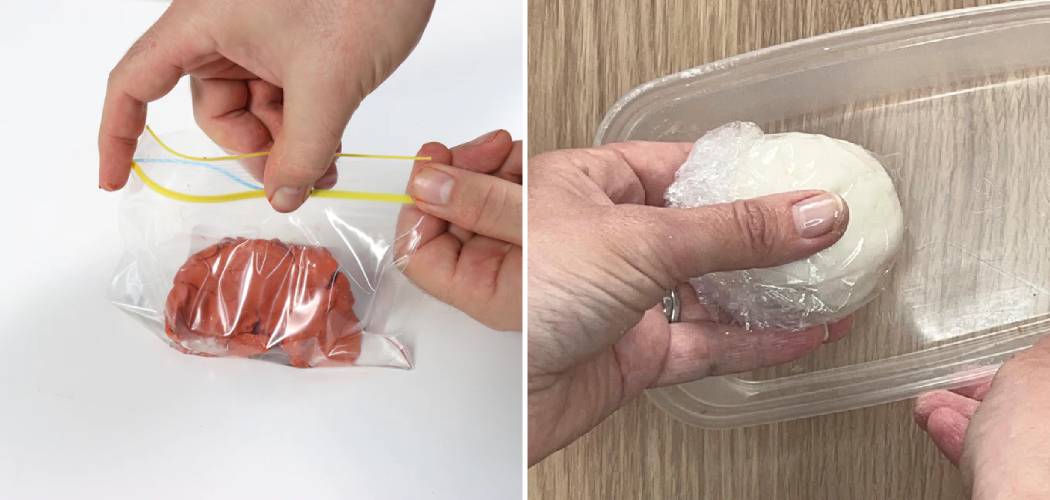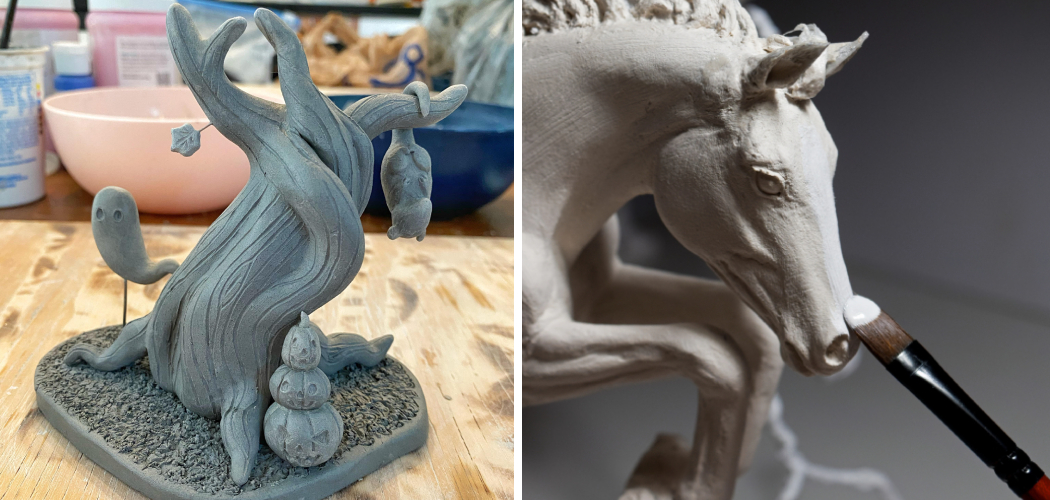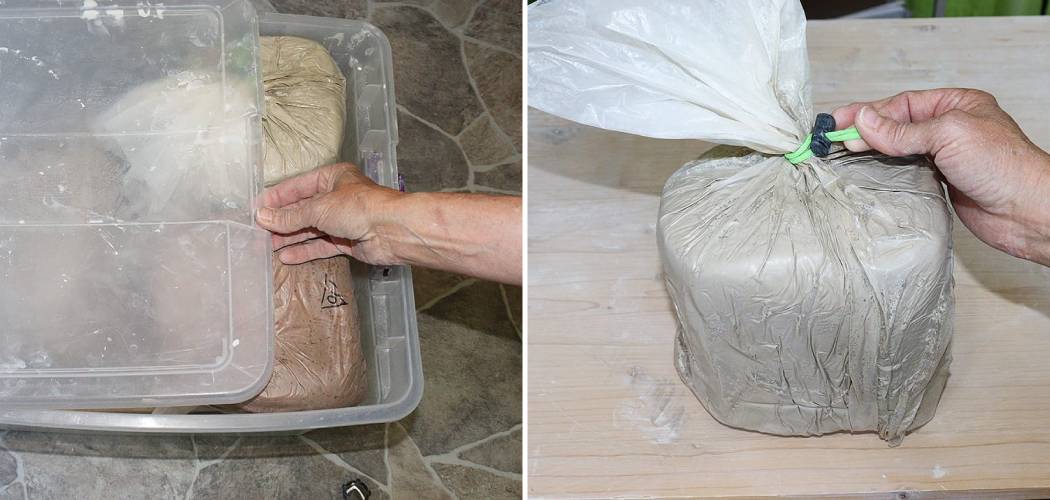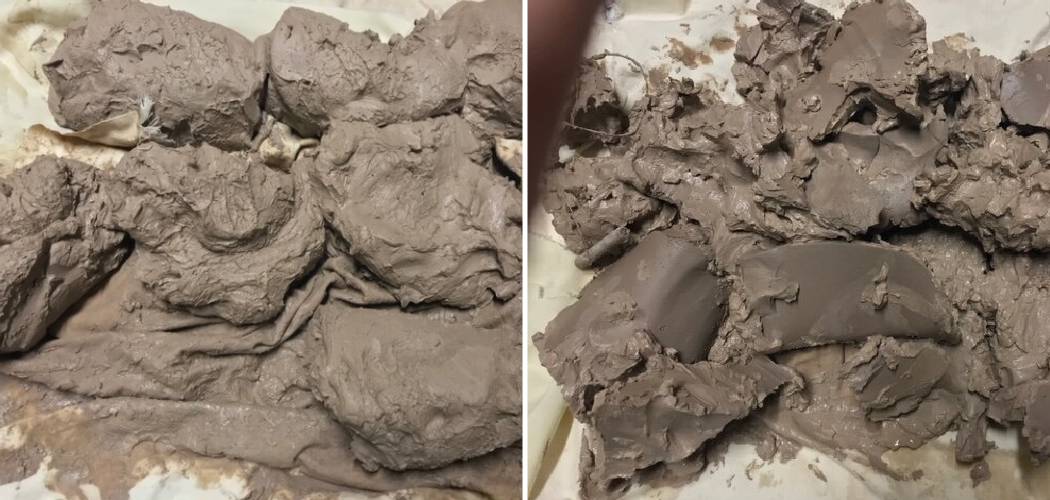Preserving the workability and malleability of clay is crucial for artists and crafters alike, as dried-out clay can be challenging to revive. Knowing how to store clay properly is a fundamental skill that ensures your creative medium remains pliable and ready for use. In this guide, we will explore effective strategies on how to store clay so it doesn’t dry out.
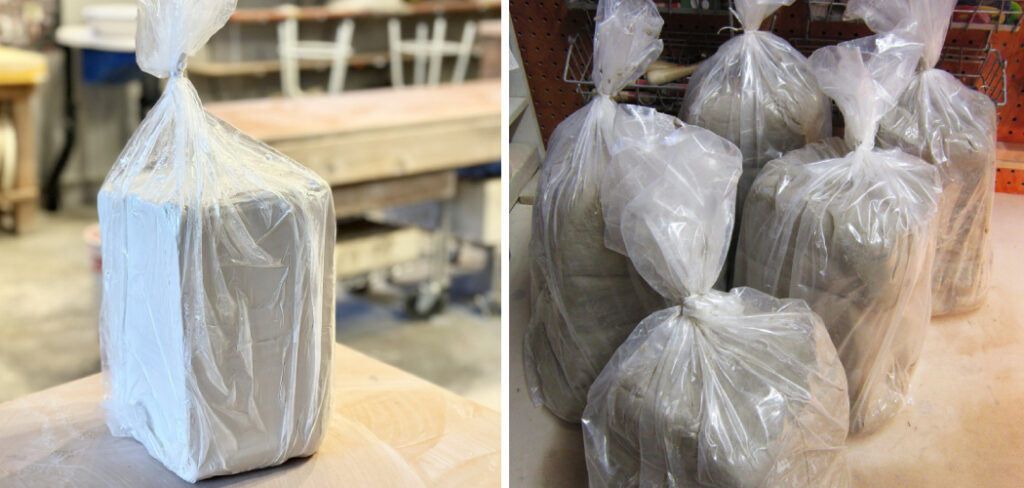
From airtight containers to moisture-retaining techniques, we’ll provide practical tips to maintain the ideal clay consistency. Whether you’re a pottery enthusiast or enjoy sculpting as a hobby, understanding the nuances of clay storage can save you from the frustration of discovering hardened or unusable clay. Uncover the secrets to extending the lifespan of your clay and ensure that your artistic endeavors are always met with a fresh and workable medium.
Table of Contents
Importance of Proper Clay Storage to Prevent Drying
Clay is a versatile material that is widely used in various crafts, arts, and construction projects. It is a natural resource that has been utilized by humans for thousands of years, and its properties have made it an essential component in many cultures.
One of the most significant challenges when working with clay is preventing it from drying out. If left exposed to air for extended periods, clay can become hard and unusable, causing frustration and potentially wasting materials. Therefore, it is crucial to know how to store clay properly to prevent drying.
In this article, we will discuss the various methods of storing clay so that it doesn’t dry out. These techniques are essential for anyone who regularly works with clay, whether as a beginner or an experienced artist.
Factors That Affect Clay Drying
Before we dive into the specific methods of clay storage, it is essential to understand the factors that affect its drying process. These include:
- The type of clay: Different types of clay have varying levels of moisture content and drying rates. For example, earthenware clay dries faster than stoneware clay.
- Humidity: High humidity levels can slow down the drying process, while low humidity levels can speed it up. Therefore, it is essential to consider the environmental conditions when storing clay.
- Temperature: Clay dries faster in warm temperatures and slower in cold temperatures.
Knowing these factors can help you determine the best method for storing your clay based on your specific circumstances.

10 Methods How to Store Clay so It Doesn’T Dry
1. Keep It in an Airtigh t Container
One of the most important things to remember when storing clay is to keep it in an airtight container. This will prevent any air from getting in and drying out the clay. You can use a plastic or metal container with a lid, or even a resealable plastic bag. Just make sure it is completely sealed to keep the clay moist.
2. Use Plastic Wrap
If you don’t have an airtight container, you can also use plastic wrap to cover the clay. Make sure to wrap it tightly and seal any openings to prevent air from getting in. This method is also useful if you only have a small amount of clay to store.
3. Store in a Cool, Dark Place
Clay tends to dry out faster when exposed to heat and light, so it’s best to store it in a cool, dark place. This could be a closet, cabinet, or even a basement. Just make sure that the area is well-ventilated to prevent mold growth. It’s also a good idea to cover the clay with a damp cloth or plastic wrap before storing it to retain its moisture.
4. Add Water if Necessary
If your clay does start to dry out, you can add small amounts of water to bring it back to its original consistency. Just be careful not to add too much water as this can affect the quality of the clay. Use a spray bottle to mist the clay lightly, then knead it until the water is evenly distributed. You can also wrap the clay in a damp cloth or place it in an airtight container with a wet sponge to rehydrate it overnight.
5. Use a Damp Cloth or Paper Towel
Another way to prevent your clay from drying out is by using a damp cloth or paper towel. Place it over the clay before sealing it in an airtight container or wrapping it with plastic wrap. This will help keep the moisture in the clay and prevent it from drying out too quickly. Just make sure to wring out excess water from the cloth or paper towel before using it to avoid making your clay too wet.
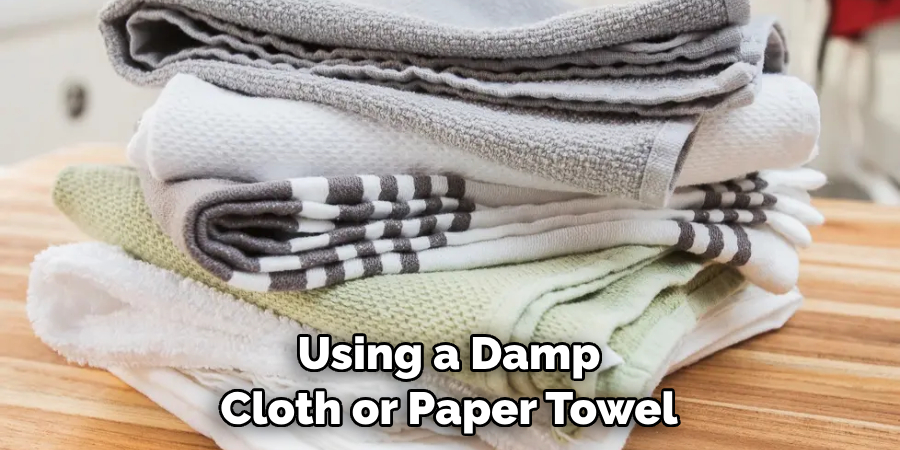
6. Keep Unused Portions Wrapped up
When working with clay, only take out as much as you need and keep the rest wrapped up until you’re ready to use it again. This will prevent any excess clay from drying out while you work. If you have multiple colors or types of clay, keep them separated and wrapped up individually.
7. Store Upside down
To keep your opened containers of clay from drying out, store them upside down so that any moisture will settle on top instead of evaporating from the bottom. This will create a seal and keep your clay fresh. If you have larger containers of clay, consider transferring them into smaller airtight containers to minimize air exposure.
8. Use Glycerin
Adding a few drops of glycerin into your storage container can help keep your clay moist for longer periods of time. Glycerin is a humectant, meaning it attracts and holds onto moisture. This makes it an effective ingredient in many skincare products as well as a helpful tool for keeping your clay moist.
9. Use Wet Sponges
Placing wet sponges around your containers of clay can also help maintain moisture levels and prevent drying. Sponges are porous and can absorb water, which they release slowly into the surrounding environment. By keeping a few wet sponges near your clay, you create a humid atmosphere that will prevent it from drying out too quickly.
10. Consider a Clay Humidifier
If you work with clay frequently, investing in a clay humidifier may be a good option. These devices are specifically designed to keep clay moist and can be placed in your storage container or workspace. However, they can be expensive and may not be necessary for occasional clay use.
Avoiding Exposure to Direct Sunlight and Heat
Clay is a versatile and popular material used in various crafts and art projects. From pottery to sculpture, it is easy to mold and shape into different forms. However, one of the biggest challenges with working with clay is making sure it doesn’t dry out before you are finished using it. Storing clay properly is crucial to ensure its longevity and usability.
One of the most important things to keep in mind when storing clay is to avoid exposure to direct sunlight and heat. Clay dries out quickly when it comes into contact with these elements, which can ruin its texture and make it difficult to work with. Therefore, it is best to store your clay in a cool, dark place where it is not exposed to direct sunlight or heat sources such as heaters or radiators.
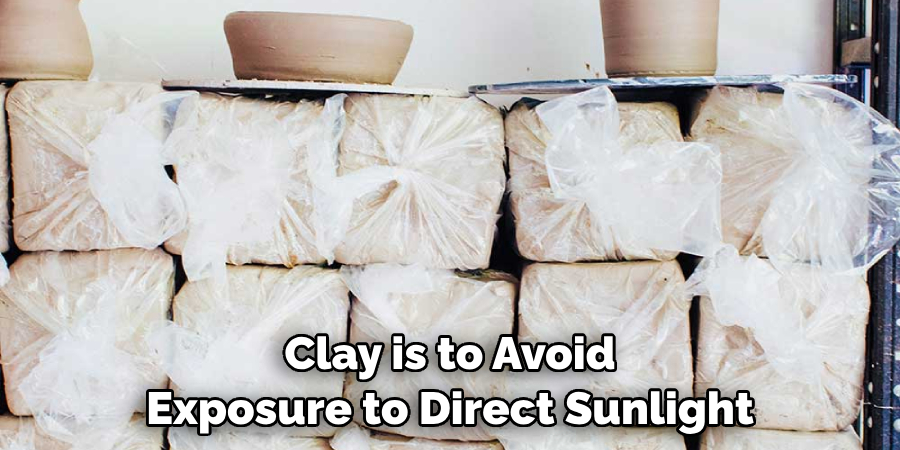
Another tip for storing clay is to keep it in an airtight container. This prevents any moisture from escaping, which can cause the clay to dry out. You can use plastic bags, containers, or even wrap your clay in cling film to keep it sealed and protected.
If you are using air-dry clay, it is important to note that it should not be stored in an airtight container. This type of clay needs to breathe and dry out naturally, so it is best to keep it in a cool, well-ventilated area.
If you are storing multiple colors of clay, make sure to separate them properly. Mixing different colored clays can result in unwanted color changes and effects when used for your projects. It is best to store each color separately to avoid any potential issues.
Placing a Damp Sponge or Cloth inside the Container
Clay is a versatile and popular material used for various arts and crafts projects. However, one of the biggest challenges when working with clay is preventing it from drying out. When exposed to air, clay can quickly dry out and become unusable. This can be frustrating especially if you have spent hours working on a project only to find your clay has dried out.
But fear not, there are simple ways to store clay so it doesn’t dry out. One effective method is by placing a damp sponge or cloth inside the container where you keep your clay.
A damp sponge or cloth acts as a moisture barrier that helps to maintain the humidity level in the container. This prevents the clay from drying out and keeps it soft and pliable for future use.
When using this method, it is important to regularly check the sponge or cloth and replace it with a fresh one when it dries out. This will ensure that your clay remains moist and workable for as long as possible.
Things to Consider When Storing Clay
Storing clay properly is an essential part of pottery and sculpture making. If you are a beginner, storing your clay might not be something that comes to mind right away. However, keeping clay fresh and pliable for future use is crucial in the success of your projects. Here are some things to consider when storing clay:
The Type of Clay
There are different types of clay, and each has its unique characteristics. The type of clay you are using will determine how to store it properly. For example, oil-based clays like polymer clay can be stored at room temperature without drying out. However, water-based clays need to be kept moist to maintain their pliability.
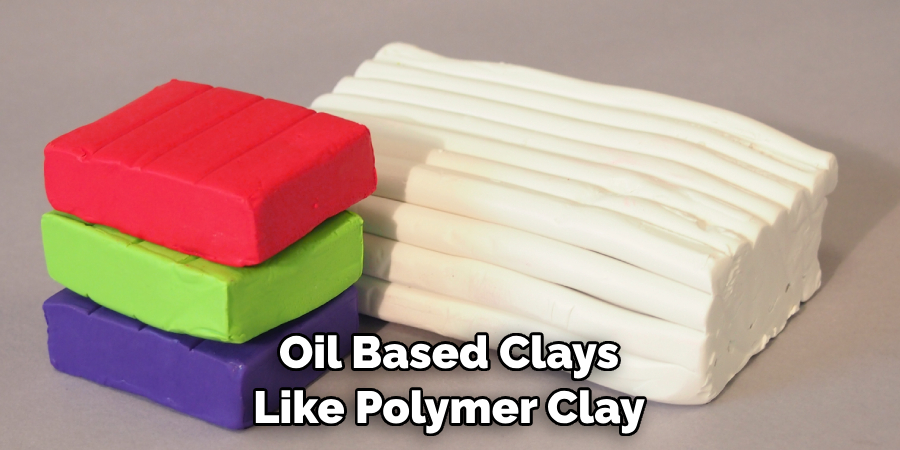
Moisture Levels
To keep your clay from drying out, you need to consider the moisture levels in your storage area. Humidity is vital when it comes to clay storage. If you live in a dry climate, storing your clay in an airtight container with some water will help keep it moist. On the other hand, if you live in a humid environment, storing your clay in a breathable container or paper bag will prevent it from becoming too moist.
Temperature
Another factor to consider when storing clay is temperature. As a general rule, keep your clay in a cool and dark place. Avoid storing it near heating sources or direct sunlight as these can cause the clay to dry out and become brittle. Extreme temperatures can also affect the quality of your clay, so make sure to check the recommended storage temperature for the type of clay you are using.
Proper Sealing
Ensuring proper sealing of your clay is crucial to prevent it from drying out. If you are using a plastic container or bag, make sure it is adequately sealed to keep air and moisture out. Alternatively, if you are storing your clay in a paper bag, fold the top down twice to create a tight seal. You can also use plastic wrap to seal the clay before placing it in a container.
Storage Location
Where you store your clay is just as important as how you store it. Choose a clean and dry area away from dust, dirt, or other elements that can affect the quality of your clay. If possible, invest in a storage cabinet specifically designed for clay storage. These cabinets typically have built-in humidity control and ventilation systems to keep the clay at the right moisture levels.
Conclusion
In conclusion, storing clay properly is an essential part of ensuring its longevity and usability. By following the tips and techniques mentioned in this blog post, you can protect your clay from drying out and becoming unusable. Remember to keep your clay in a sealed container or plastic bag, to add some moisture with a damp cloth or water spray, and to check on it regularly.
We hope this blog post has provided you with valuable information on how to store clay so it doesn’t dry out. Now it’s up to you to put these tips into practice and see the results for yourself. Remember, practice makes perfect, so don’t get discouraged if it takes a few tries to find the right method that works for you. And if you have any further questions or suggestions, don’t hesitate to leave them in the comments section below.
